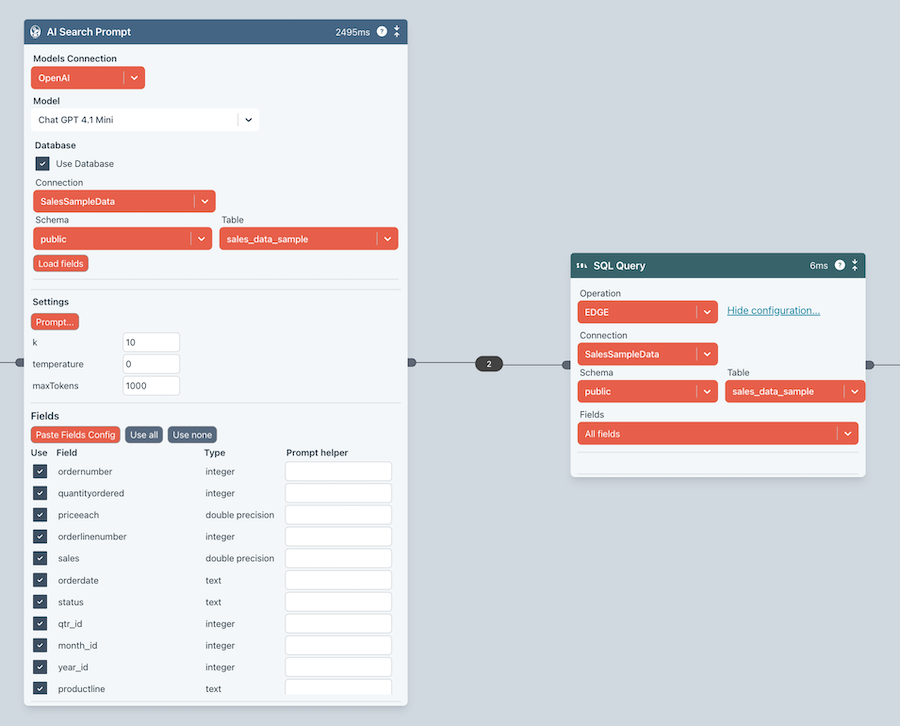EDGE
This is used to perform a SQL search. It is typically used in conjunction with the AI Search Prompt Block, in which case you can ignore the information below.

Configuration
Operation
Select EDGE from the dropdown.
Connection
Choose a Connection that points to the database you want to query.
Then, choose the schema and table as well as the fields the query should return.
Independent execution
You can use this independently to run a SQL query, in which case the previous block should output array with the first element containing the following object.
[
{
sql: {
sql: `
SELECT
ordernumber,
SUM(quantityordered * priceeach) AS total_sales,
MAX(customername) AS customername,
MAX(orderdate) AS orderdate,
MAX(country) AS country,
MAX(state) AS state,
'transform' as transform
FROM public.sales_data_sample
GROUP BY ordernumber
ORDER BY total_sales DESC
`,
countSql: `
SELECT COUNT(*)
FROM (
SELECT ordernumber
FROM public.sales_data_sample
GROUP BY ordernumber
) AS subquery
`,
},
},
{
query: "Show me all sales, highest first",
limit: 10,
offset: 0,
fetchIds: false,
isAIQuery: true,
},
]
The countSql is optional. If included, it will also perform the count operation.
The second array element contains pagination and other information. Refer to Search Flows for information about this object.
Edge Output
The edge output will contain data in a standardised format and depends on the responseType value (optional) in the second array element.
You should run various queries that generate listings or aggregated output on the output edge to see the data returned. You can examine by debugging the Flow.